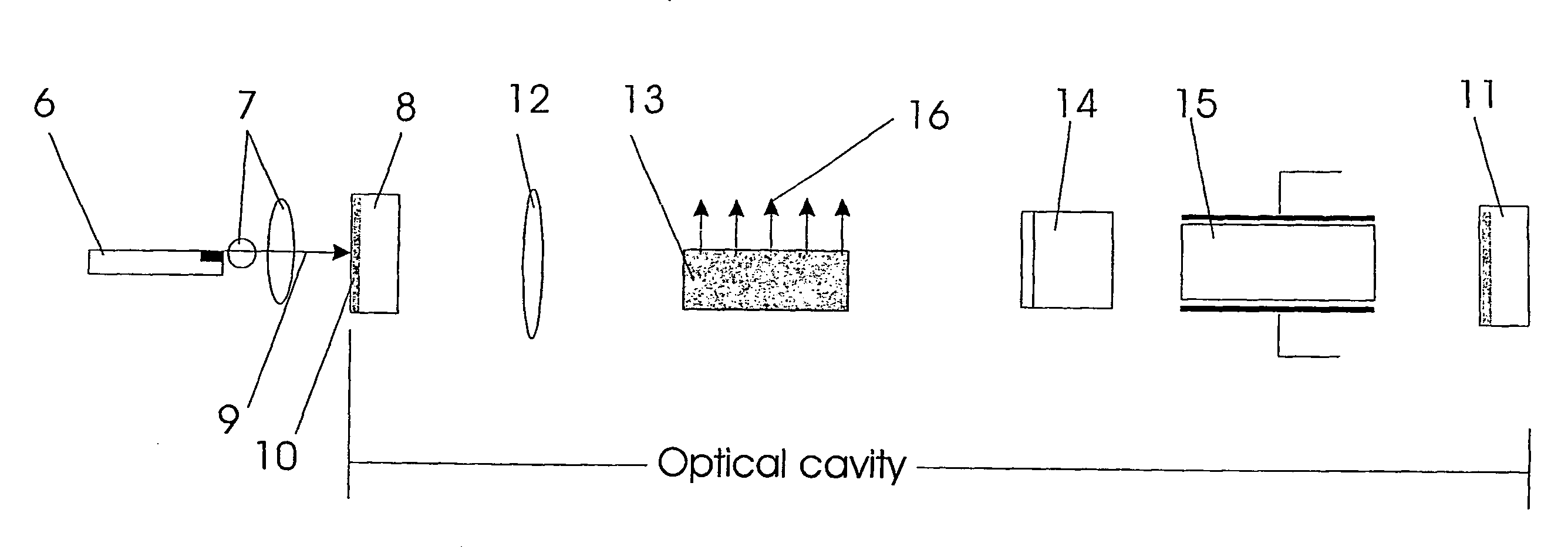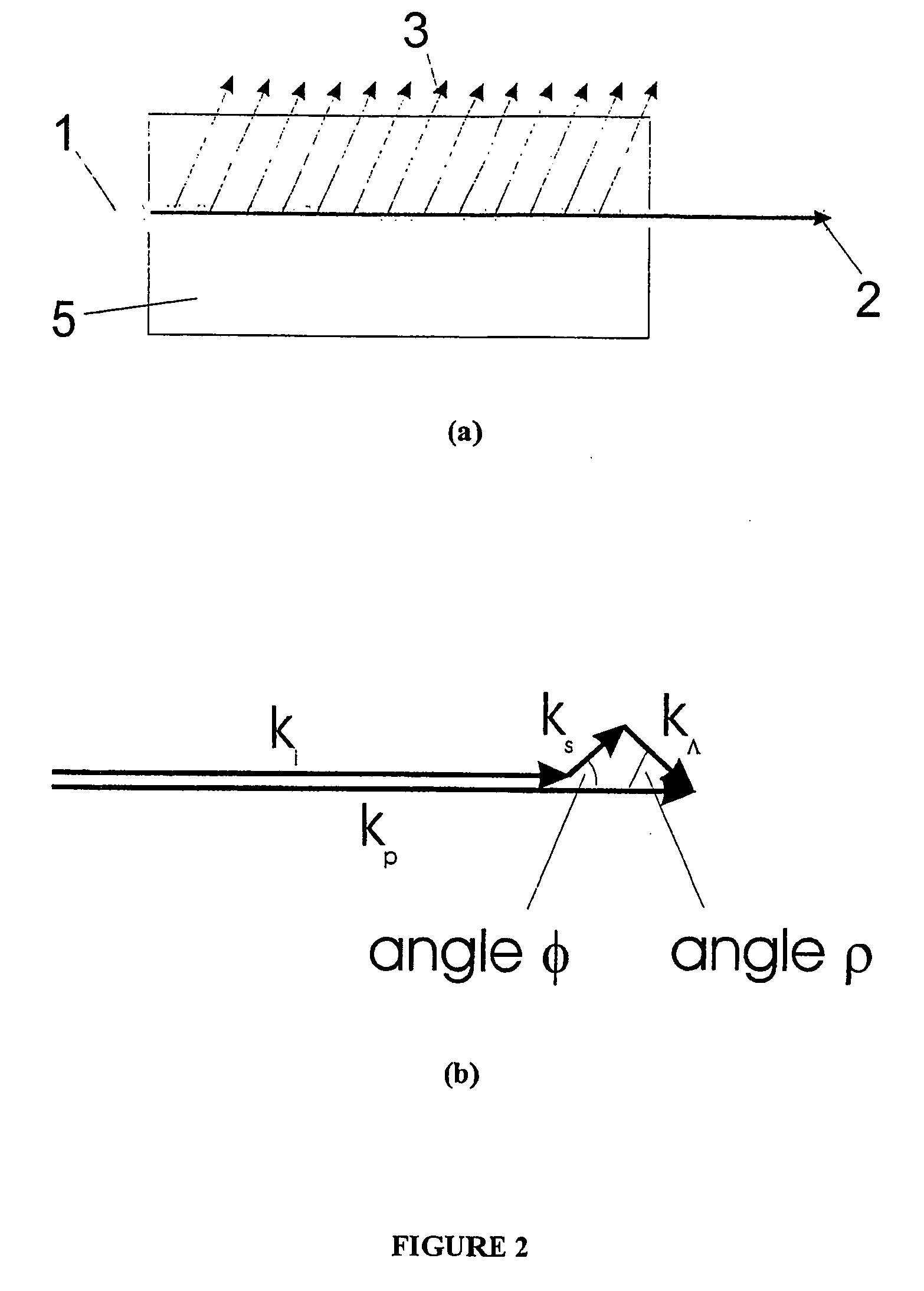Parametric Generation with Lateral Beam Coupling
a generation process and beam coupling technology, applied in the field of parametric generation with lateral beam coupling, can solve the problems that the type of crystal has not been used before, and achieve the effect of improving the parametric generation process and enhancing the pump power
- Summary
- Abstract
- Description
- Claims
- Application Information
AI Technical Summary
Benefits of technology
Problems solved by technology
Method used
Image
Examples
Embodiment Construction
[0028]FIG. 3 shows an intracavity optical parametric oscillator comprising a diode-laser pumped solid-state laser with an active Q-switch to provide pump pulses of short (nanosecond regime) duration. Within the solid-state laser is incorporated an optical parametric oscillator based on a hybrid collinear / non-collinear phase matching method. More specifically there is provided a laser excitation arrangement having a semiconductor diode-laser 6, a lens system 7 and a laser gain medium 8 into which optical radiation 9 from the semiconductor diode-laser 6 is directed. The lens system 7 is provided for optimally matching the spatial profile of the radiation from the semiconductor diode-laser 6 to the mode size, preferably the fundamental TEM00 mode, of the radiation in the laser gain medium 8. As a specific example, the laser gain medium is based on the class of laser crystals containing the neodymium active ion, and the semiconductor diode-laser is adapted to deliver optical radiation i...
PUM
 Login to View More
Login to View More Abstract
Description
Claims
Application Information
 Login to View More
Login to View More - R&D
- Intellectual Property
- Life Sciences
- Materials
- Tech Scout
- Unparalleled Data Quality
- Higher Quality Content
- 60% Fewer Hallucinations
Browse by: Latest US Patents, China's latest patents, Technical Efficacy Thesaurus, Application Domain, Technology Topic, Popular Technical Reports.
© 2025 PatSnap. All rights reserved.Legal|Privacy policy|Modern Slavery Act Transparency Statement|Sitemap|About US| Contact US: help@patsnap.com



